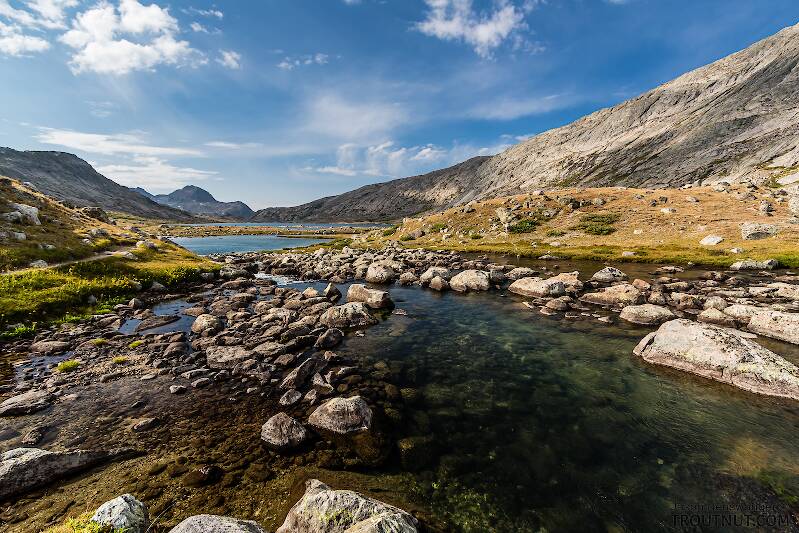
Blue-winged Olives
Baetis
Tiny Baetis mayflies are perhaps the most commonly encountered and imitated by anglers on all American trout streams due to their great abundance, widespread distribution, and trout-friendly emergence habits.
Featured on the forum
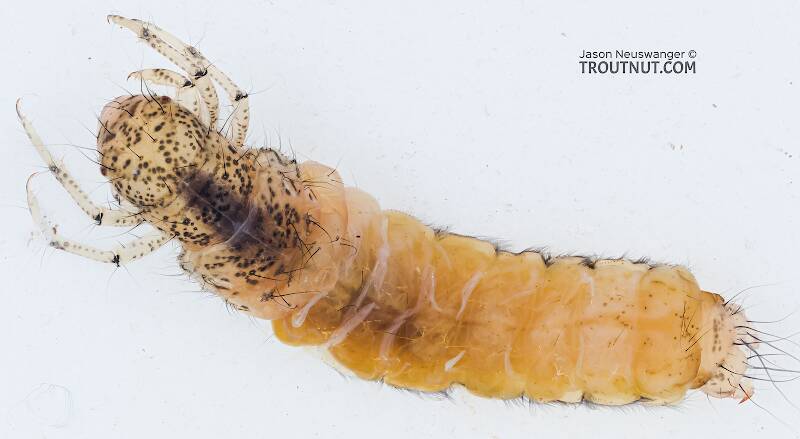
This is a striking caddis larva with an interesting color pattern on the head. Here are some characteristics I was able to see under the microscope, but could not easily expose for a picture:
- The prosternal horn is present.
- The mandible is clearly toothed, not formed into a uniform scraper blade.
- The seems to be only 2 major setae on the ventral edge of the hind femur.
- Chloride epithelia seem to be absent from the dorsal side of any abdominal segments.
Based on these characteristics and the ones more easily visible from the pictures, this seems to be Grammotaulius. The key's description of the case is spot-on: "Case cylindrical, made of longitudinally arranged sedge or similar leaves," as is the description of the markings on the head, "Dorsum of head light brownish yellow with numerous discrete, small, dark spots." The spot pattern on the head is a very good match to figure 19.312 of Merritt R.W., Cummins, K.W., and Berg, M.B. (2019). The species ID is based on Grammotaulius betteni being the only species of this genus known in Washington state.
- The prosternal horn is present.
- The mandible is clearly toothed, not formed into a uniform scraper blade.
- The seems to be only 2 major setae on the ventral edge of the hind femur.
- Chloride epithelia seem to be absent from the dorsal side of any abdominal segments.
Based on these characteristics and the ones more easily visible from the pictures, this seems to be Grammotaulius. The key's description of the case is spot-on: "Case cylindrical, made of longitudinally arranged sedge or similar leaves," as is the description of the markings on the head, "Dorsum of head light brownish yellow with numerous discrete, small, dark spots." The spot pattern on the head is a very good match to figure 19.312 of Merritt R.W., Cummins, K.W., and Berg, M.B. (2019). The species ID is based on Grammotaulius betteni being the only species of this genus known in Washington state.

Troutnut is a project started in 2003 by salmonid ecologist Jason "Troutnut" Neuswanger to help anglers and
fly tyers unabashedly embrace the entomological side of the sport. Learn more about Troutnut or
support the project for an enhanced experience here.
Ephemerella invaria (Sulphur) Mayfly Nymph Pictures
This small Ephemerella invaria nymph was at least a month away from emergence.
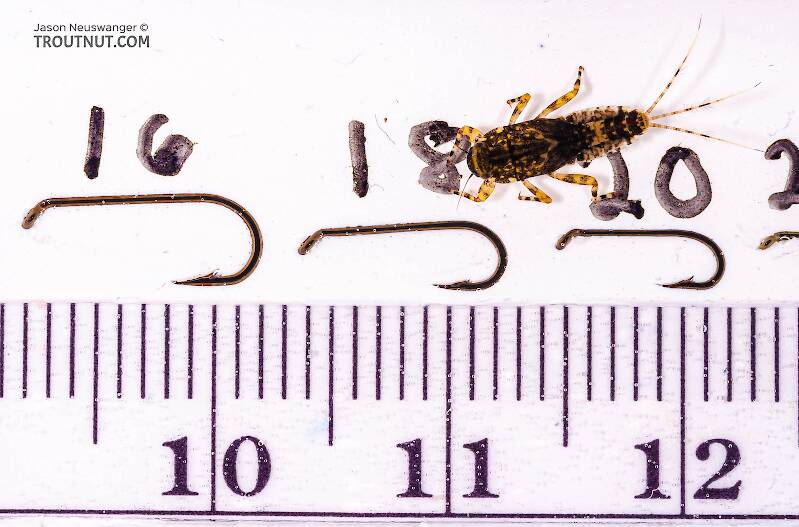
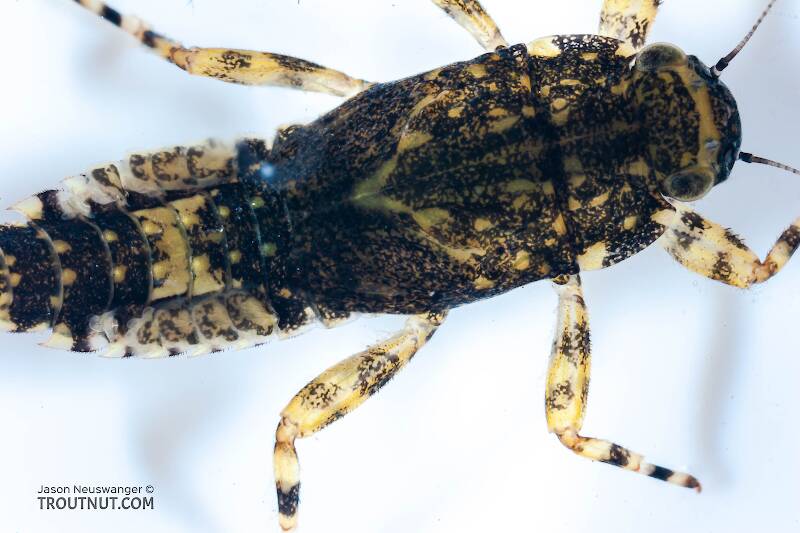
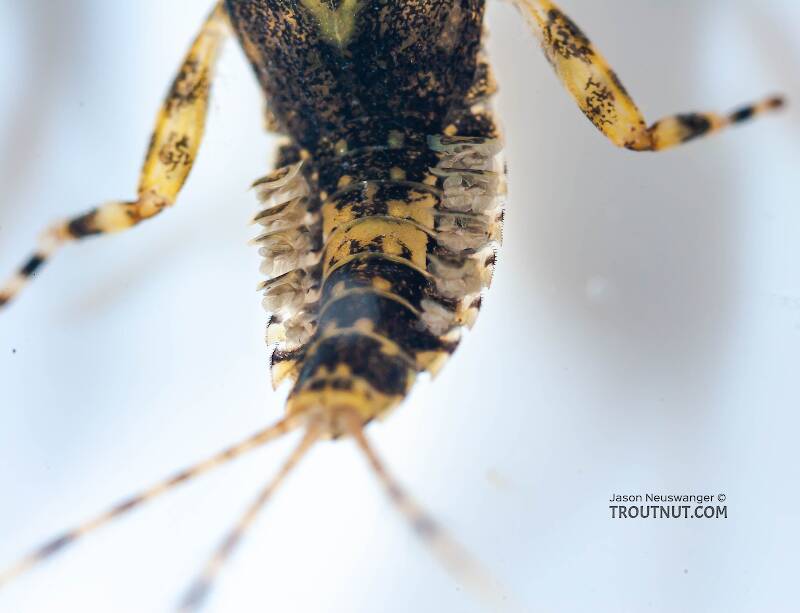
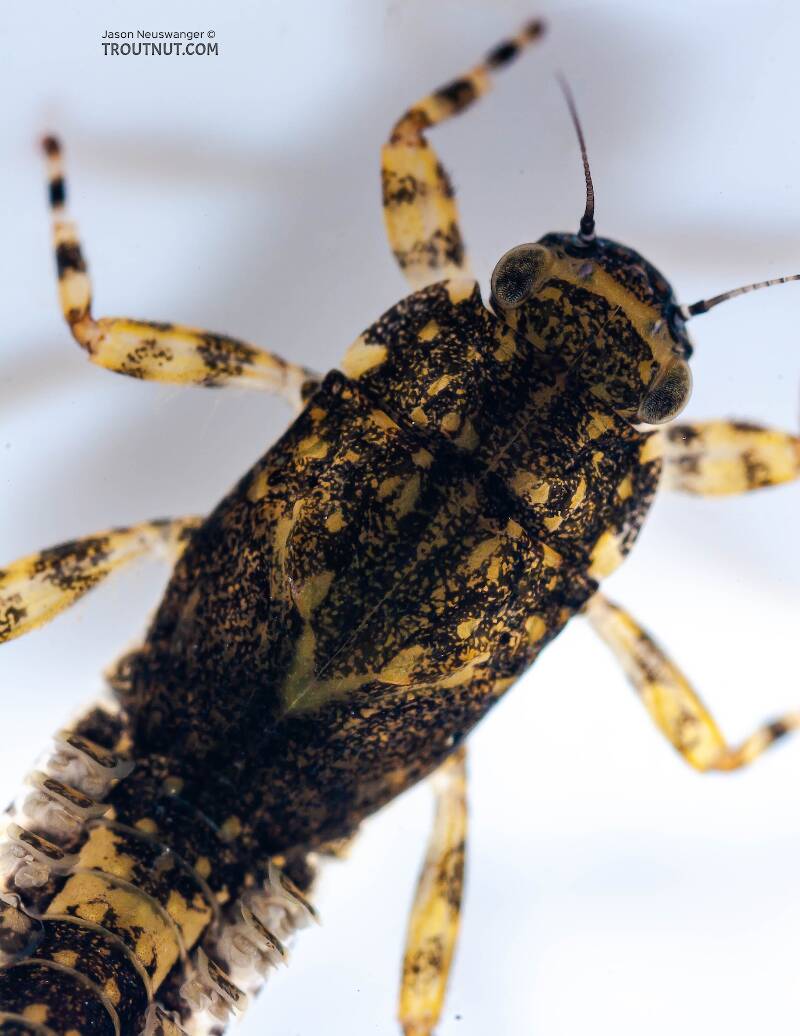
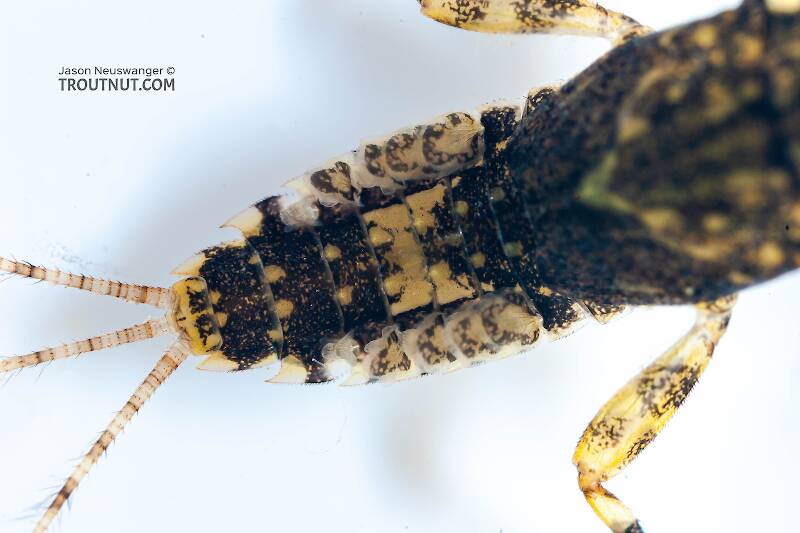
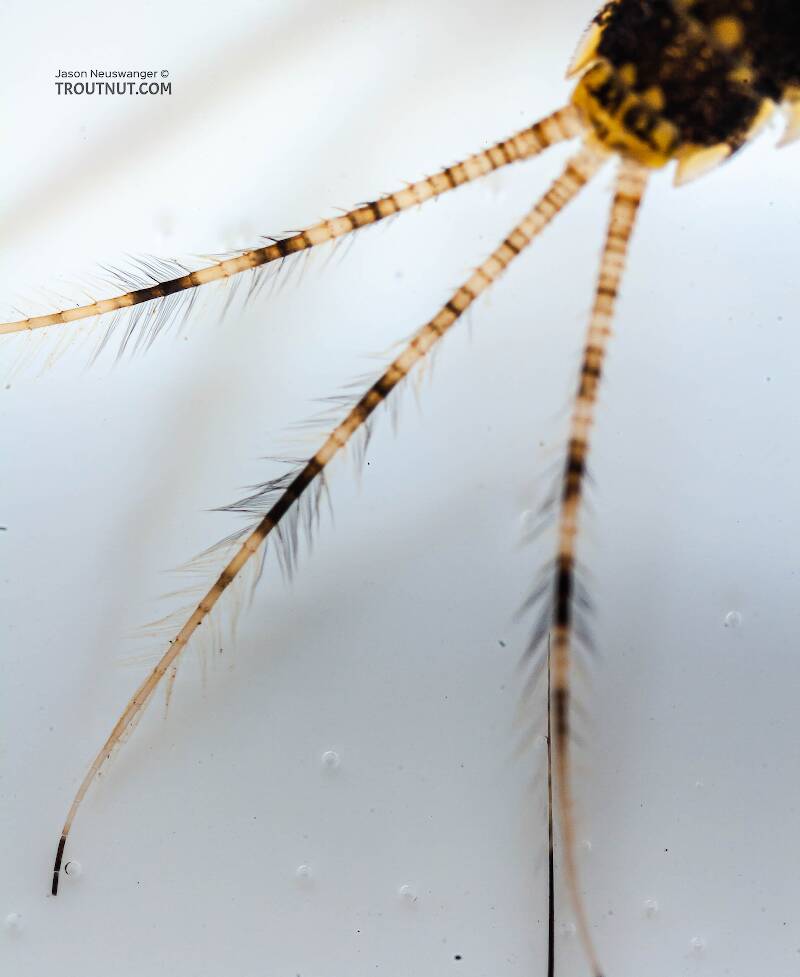
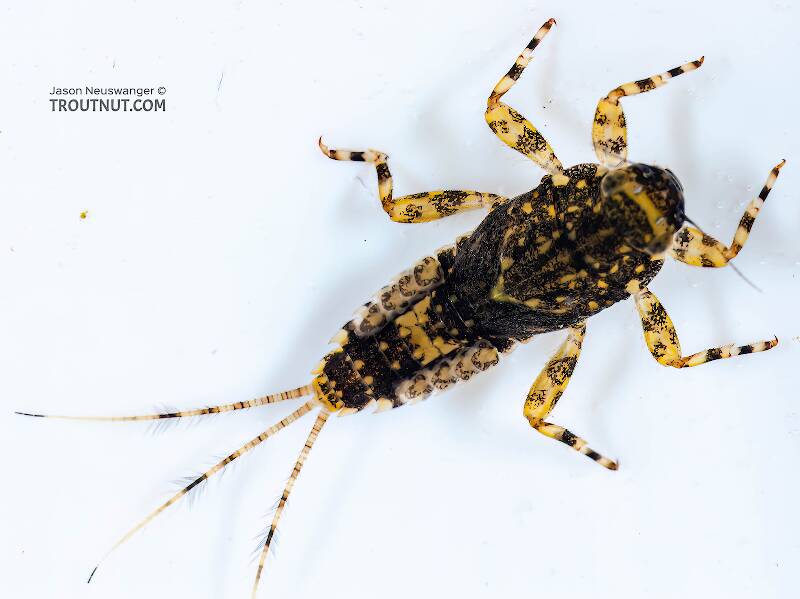
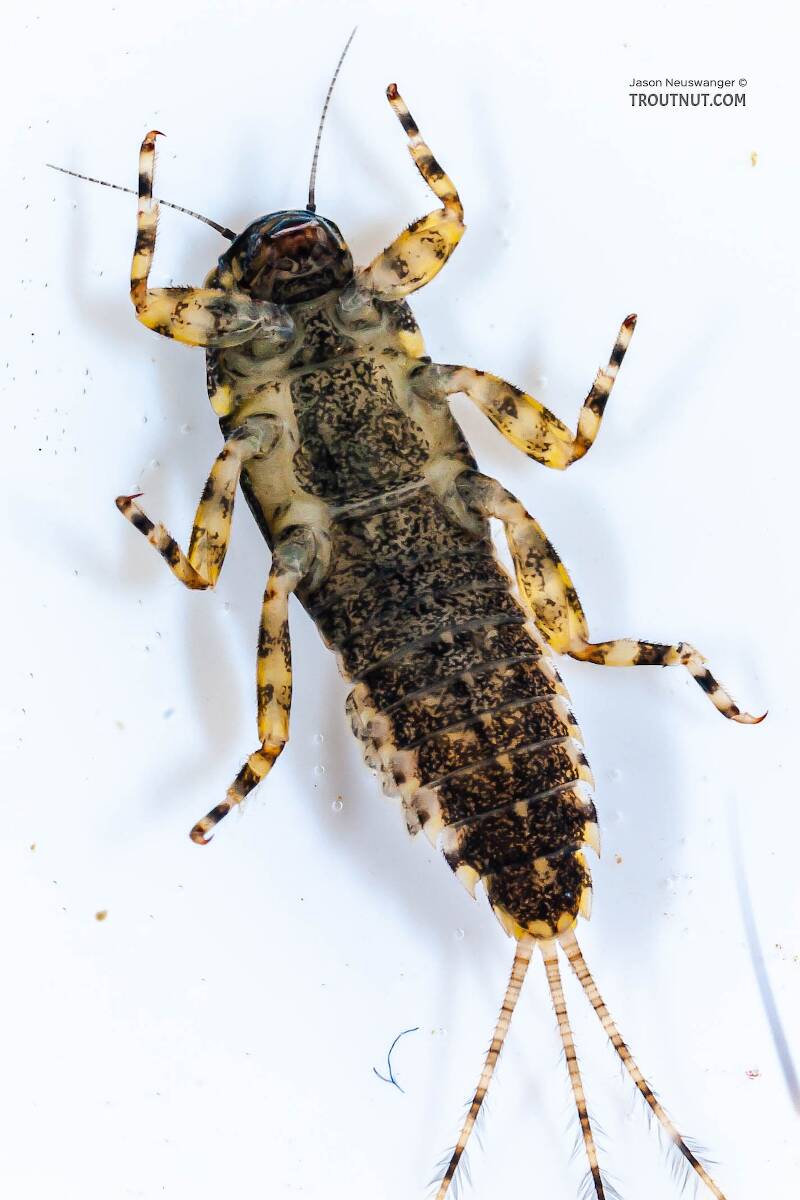
This mayfly was collected from the Beaverkill River in New York on April 19th, 2006 and added to Troutnut.com by Troutnut on April 21st, 2006.
Discussions of this Nymph
Invaria nymph
18 replies
Posted by Martinlf on Dec 23, 2006
Last reply on Nov 30, 2009 by Oldredbarn
OK, the invaria nymph shows the same lighter darker dorsal bandsand the solid dark ventral color on the abdomen as the subvaria, though its size makes me wonder if it is immature and may darken. For many considering this kind of detail will be superfluous, but for some of us nuts who like to fritter away the hours considering the possible uses of such information, this may confirm the claims of those who like to leave streaks in when blending fur, or perhaps even the claims of Caucci and Nastasi who promote a spectrumized dubbing.
Start a Discussion of Nymph
References
- Merritt R.W., Cummins, K.W., and Berg, M.B. 2019. An Introduction to the Aquatic Insects of North America (Fifth Edition). Kendall/Hunt Publishing Company.
Ephemerella invaria (Sulphur) Mayfly Nymph Pictures
Collection details
Location: Beaverkill River, New York
Date: April 19th, 2006
Added to site: April 21st, 2006
Author: Troutnut
Date: April 19th, 2006
Added to site: April 21st, 2006
Author: Troutnut

